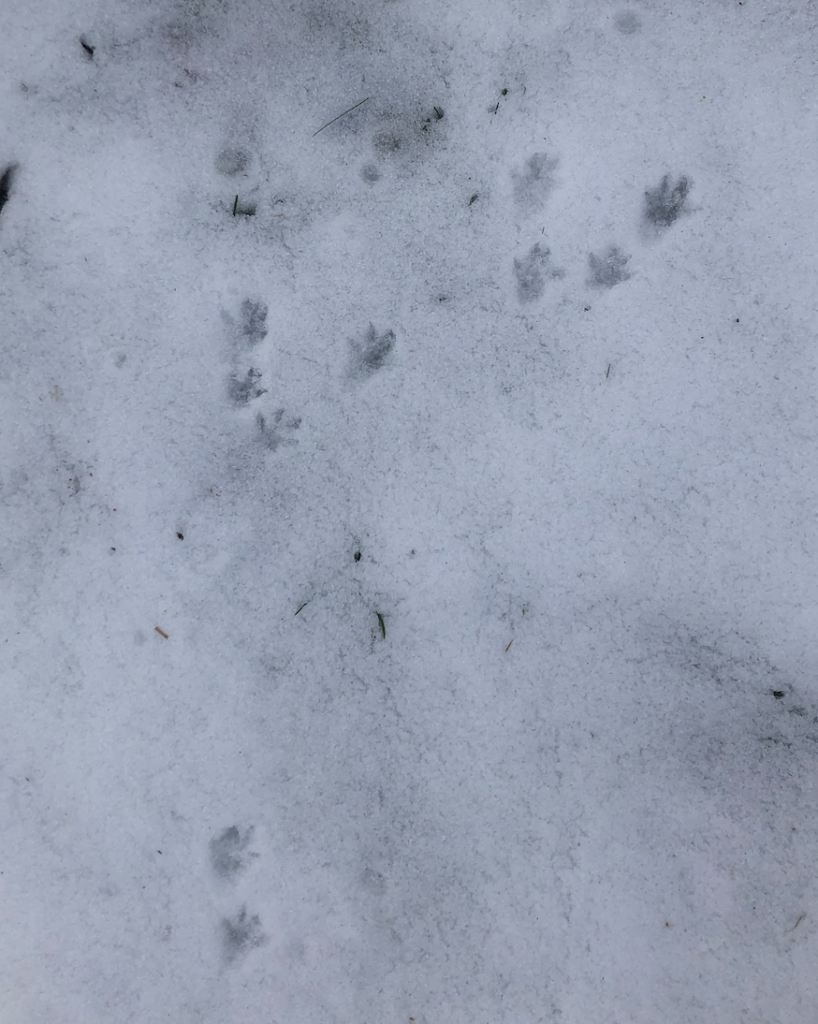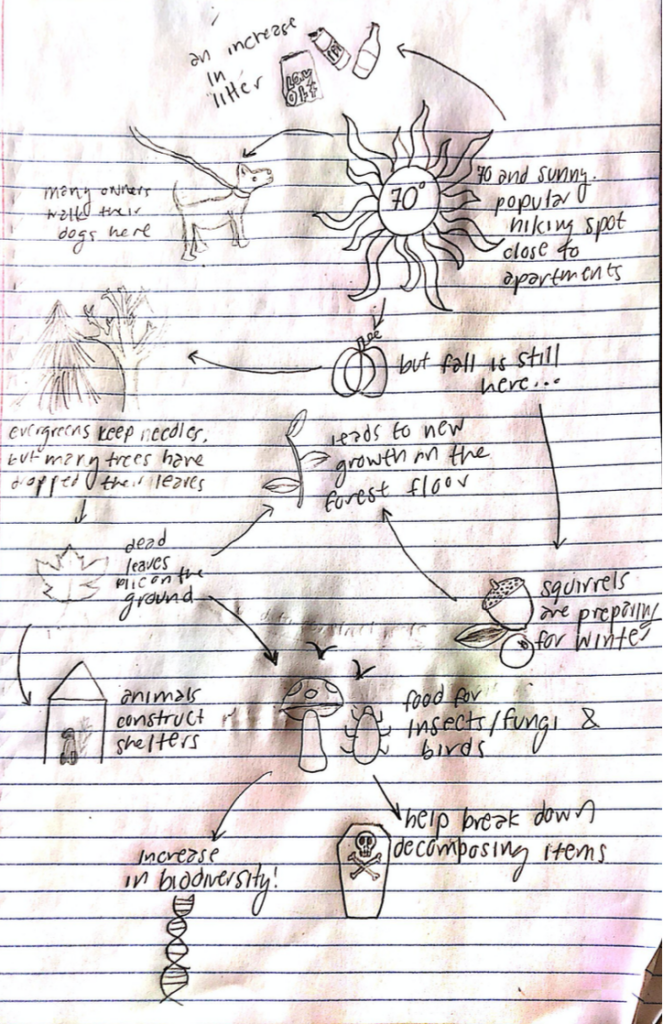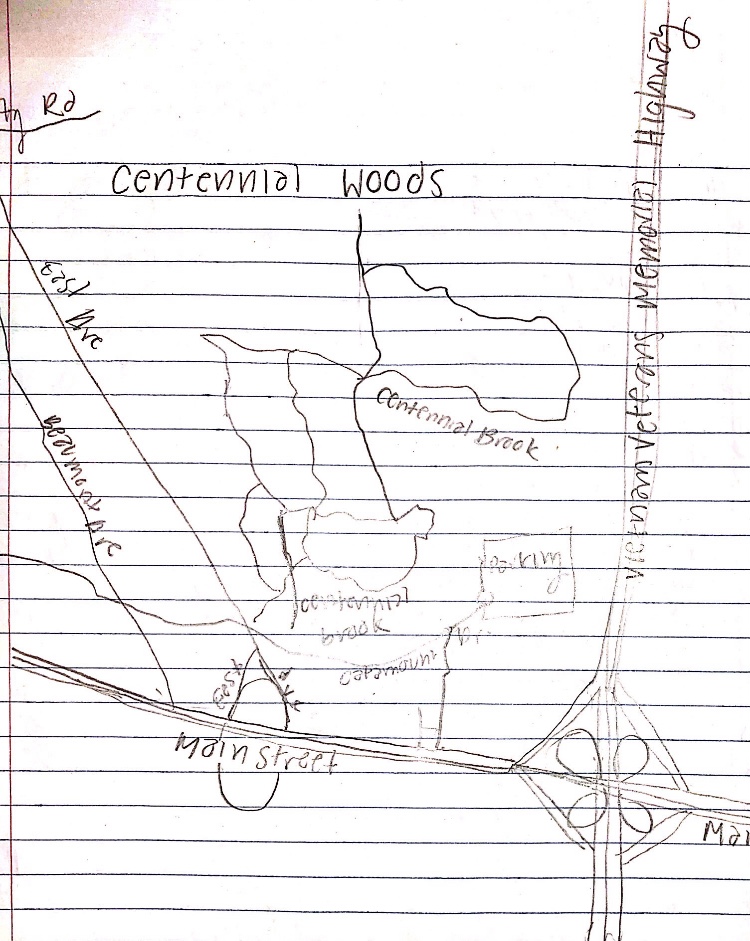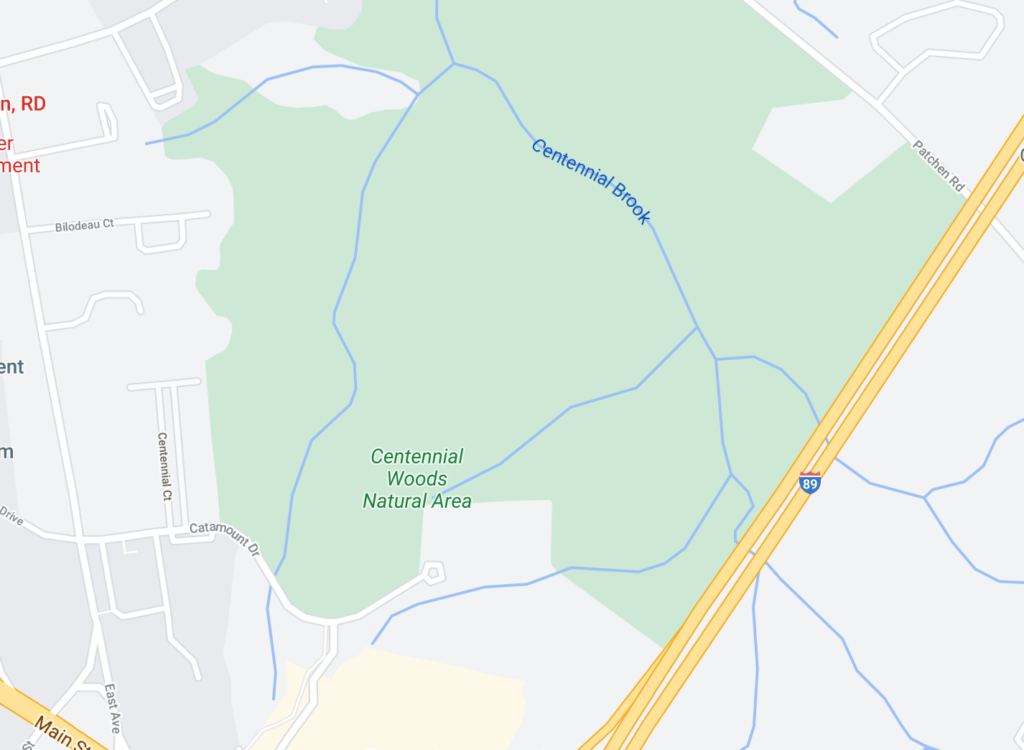As previously shown by my photographs of raccoon tracks in the snow within Centennial Woods, the increased snow and cooler temperatures have done nothing to slow the activity of wildlife native to the area.
My last visit to these woods occurred in November, where periodic freezes had resulted in the turnover of some greenery, along with a lesser presence of non-mammalian animals local to the area (including the minnows, frogs, and salamanders who frequented the brook in warmer weather). Now, a heavy blanket of snow covers the ground, and any remaining leaves that gripped the branches of deciduous trees in the fall have been shaken to the ground from repeated storm activity.
While it may be more difficult to see cold blooded creatures in the vicinity, the absence of the brighter colors of the summer and fall seasons make it easier to spot local wildlife. The ability of snow to provide some soundproofing of the forest floor allowed multiple birdcalls to be heard with much clarity, and the neutral colors of the forest allowed me to see a male cardinal and two robins. The call of a crow could be heard throughout the forest, which much frequency (perhaps a murder in the vicinity!).
Beyond the activity of some feathered friends, multiple grey squirrels were seen climbing the trunks of the now leafless trees in Centennial Woods. Tracks suggested that one or more raccoons were present in the area. I initially had more photos of what I considered to be coyote or wolf tracks, but upon further analysis concluded they most likely belonged to one of the many domesticated dogs that are walked along the paths of Centennial Woods.
Feels great to be back!




